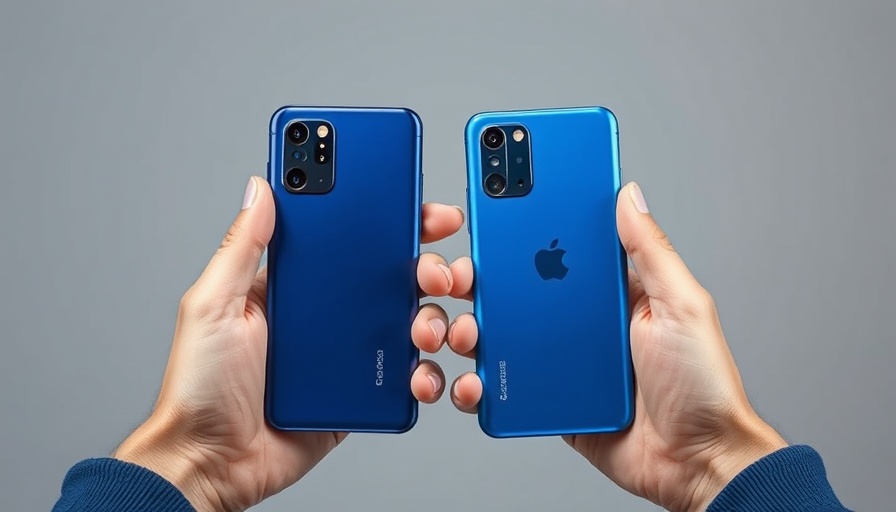
The Psychology Behind Switching
Transitioning from an iPhone to Android can be more than just a technical move; it taps into emotions that influence user behavior. According to research, users often experience a psychological barrier known as switching costs, which aren’t just financial but encompass emotional connections to their devices. As executives, this understanding is crucial when considering strategies for digital transformation in an organization.
The Financial Costs Are Just the Beginning
The decision to switch from an iPhone to Android isn't solely driven by the potential financial savings or benefits of new features. As business leaders, we must recognize that the emotional investment users have in their devices delays the adoption of superior technology. They feel an inherent risk in stepping outside their comfort zones, making it essential to seamlessly address these psychological barriers when promoting technological changes within an enterprise.
Mimicking Familiarity: Features That Lure Users
The recent Google event—and particularly the introduction of the Pixel 10 Pro—demonstrates how manufacturers employ strategies to ease switching fears. By integrating features common in the Apple ecosystem, such as Pixel Journal for journaling, Google aims to reduce the perceived loss of functionality when users make the switch. Here, the adoption of a code fluent strategy becomes vital for CTOs looking to ease their teams into new systems without overwhelming them with drastically different workflows.
AI Capabilities: What’s at Stake?
The advancements in AI-driven technology, as highlighted by Google's focus on the Pixel's smart features, indicate a strong trend for future mobile technology. Business owners must consider how AI enhances functionality in mobile devices, thus serving as an incentive for users who might otherwise hesitate in re-evaluating their tech stacks. As the executive landscape shifts toward operational AI integration, leaders should recognize the potential for machine-led growth when transitioning sensitive systems to new platforms.
Breaking Emotional Ties: The Social Connectivity Dilemma
A notorious example of loyalty driven by emotional ties is the blue versus green bubble debate surrounding iMessage. Users are fiercely loyal to Apple's messaging system, as it symbolizes a higher social status due to its exclusive features. As prospective switchers view these barriers, the social perception of technology positions itself as a hurdle. For decision-makers, understanding these social dynamics can aid in restructuring how technology adoption is approached within teams.
The Future of Switching: What Lies Ahead?
The tech industry is poised for competition, with major players refining features to attract and retain users. The evolution of customer preferences and technological landscapes will necessitate a dynamic approach from CTOs and CMOs who must adapt their strategies for implementation. Innovations in cloud technologies and distributed networks will continue to shape the conversation around transition.
Conclusion: Making an Informed Decision
Ultimately, transitioning from iPhone to Android isn't just a matter of choosing a new device; it’s about embracing the freedom offered by different technologies. As you weigh the pros and cons of the Pixel 10 Pro, consider its role in your technology portfolio and how it supports broader organizational goals. With careful planning and consideration of emotional, financial, and strategic implications, executives can navigate the transition and harness new capabilities for greater business success.
 Add Row
Add Row  Add Element
Add Element 



Write A Comment